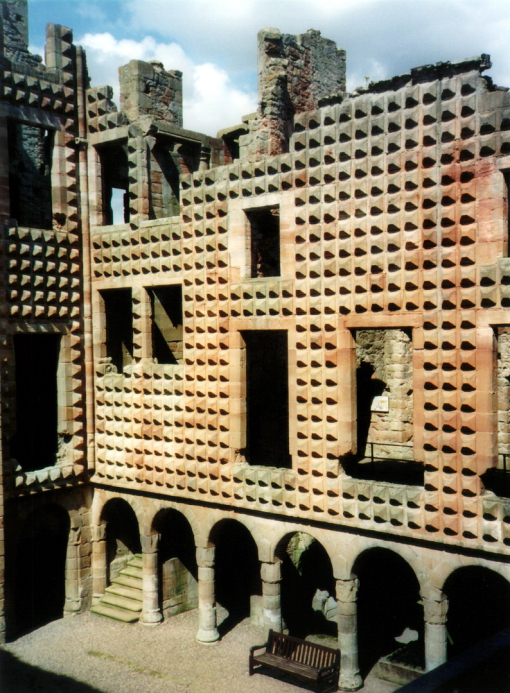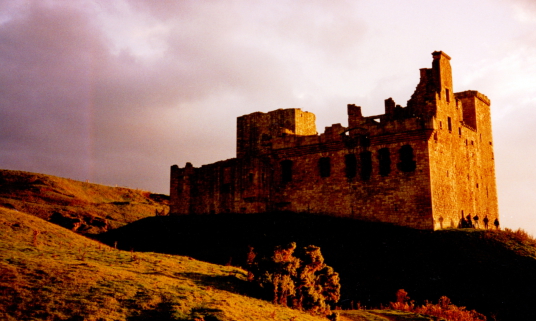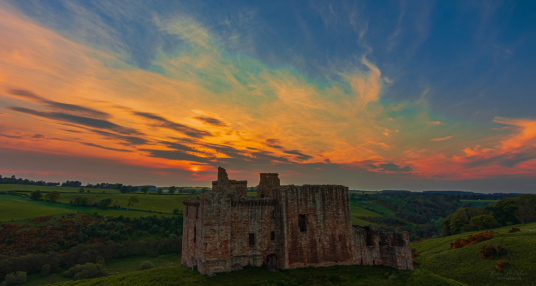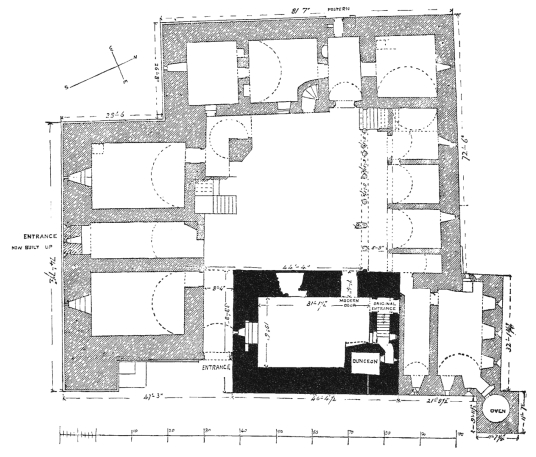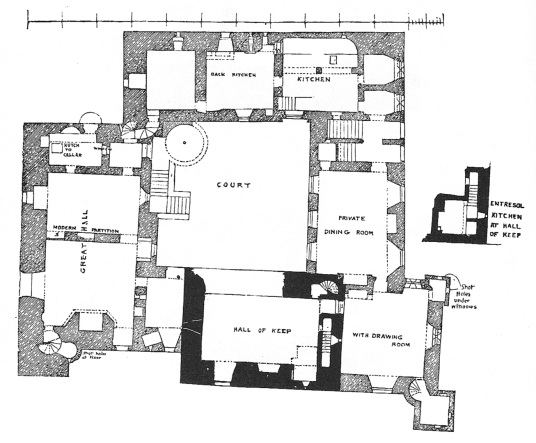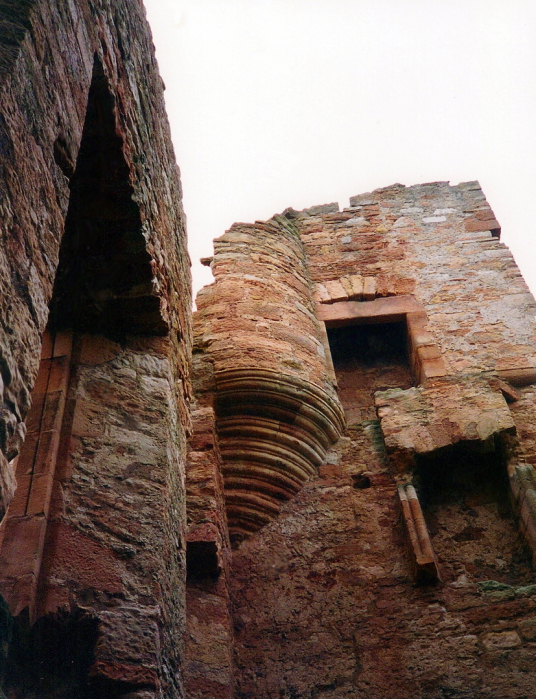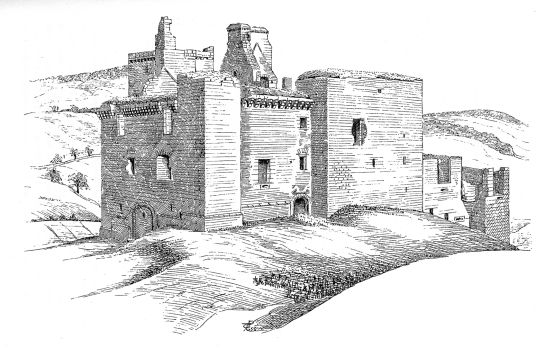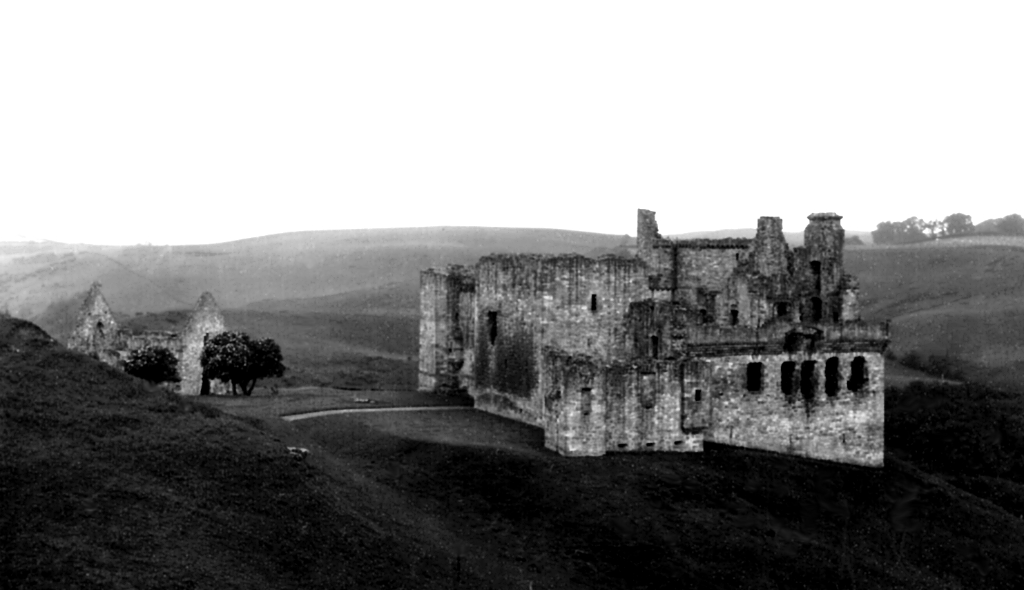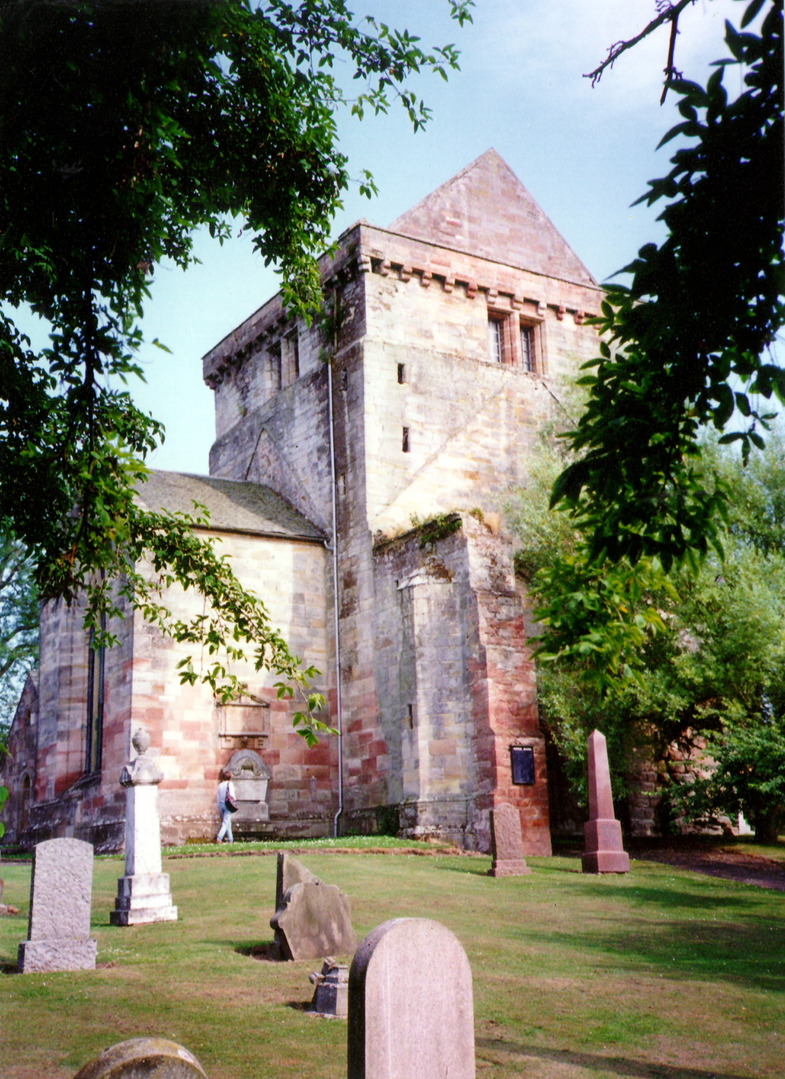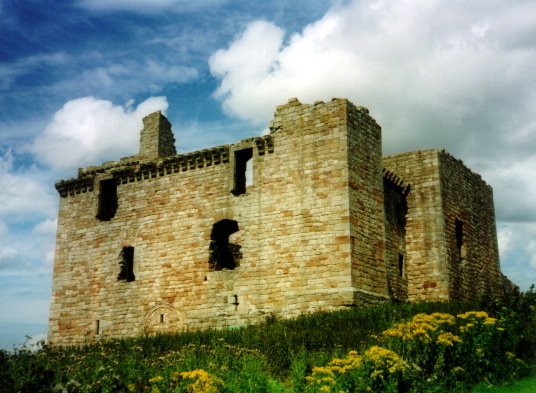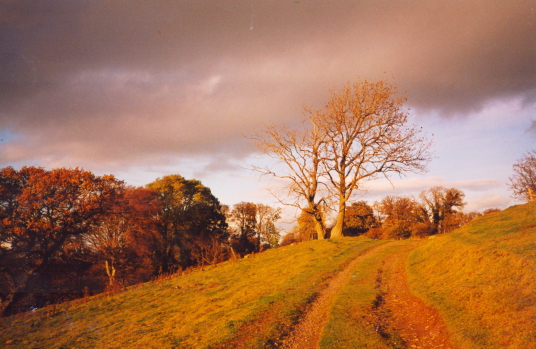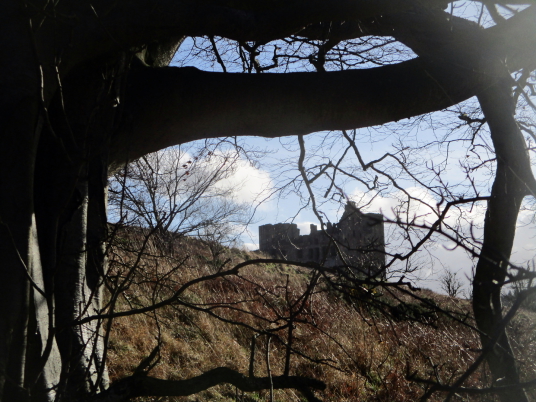Crichton Castle
In a lovely but lonely location above the River Tyne, Crichton Castle is a large and impressive old stronghold, first built by the Crichtons and then held by the Hepburn and Stewart Earls of Bothwell, with a stunning diamond-carved facade and loggia based on a palace in Italy.
Lothians: About 2 miles east of Gorebridge, on minor road and footpath west of B6367, about 0.5 miles south-west of Crichton village, at Crichton Castle.
HES NT 380612 OS: 66 EH37 5XA
OPEN: Castle open Apr-Sep, daily 9.30-17.30; last entry 30 mins before closing. 600 yard walk to castle. Sales area. WC. Proximity to bats.
Tel: 01875 320017 Web: www.historicenvironment.scot
Collegiate church open May-Sep, Sun 14.00-17.00; also weddings.
Palazzo dei Diamanti (exhibition venue): www.palazzodiamanti.it
Checked 05/04/18
Colour photos as captioned by © Brian Nicholson (instagram @cyclingbrian68)
A sophisticated, large and imposing pile, Crichton Castle consists of ranges of buildings from the 14th to 16th centuries, enclosing a small courtyard. The castle stands in a valley in an attractive location above the River Tyne, and a unique feature of particular note is the diamond-faced facade of one block in the courtyard.
The oldest part is a 14th-century tower, formerly of three storeys. The basement was vaulted, and had a pit-prison. A stair led up the vaulted hall and entrance on the first floor, and another turnpike stair led to the floors above. This castle had a small courtyard.
In the 15th century a new gatehouse of three storeys was added, then further ranges enclosing the courtyard, which houses a large kitchen with two wide-arched fireplaces and many other chambers, including the once magnifcient hall with fabulous views.
Another block was added in the 16th century, Italian Renaissance in style, with a magnificent arched loggia supporting a diamond-faced facade, based on Palazzo dei Diamanti, a palace at Ferrara in Italy, which is now an exhibition venue. There are also fine carved fireplaces and some carved embellishment survives.
Outside the castle are the impressive roofless stables.
‘Crichtoun’ is marked prominently on Blaeu’s map of the Lothians in a fenced park, then as ‘Crigtoun C.’ on Adair’s map of Midlothian.
The castle was a property of the Crichtons, and probably first built about 1370. Sir William Crichton, Chancellor of Scotland, entertained William, the young 6th Earl of Douglas, and his brother David before having them murdered at the Black Dinner in Edinburgh Castle in 1440, along with slaying Sir Malcolm Fleming of Cumbernauld. John Forrester slighted Crichton Castle in retaliation.
Sir William, however, founded the nearby Crichton Collegiate Church [NT 381616, by the car park] wherein priests were to pray for his salvation – he needed all the help he could get. This is a substantial and impressive edifice, dedicated to St Mary and St Kentigern, dating from 1449, with a square crenellated tower. The church is in a peaceful wooded location with an interesting old graveyard.
Crichton’s bogle is said to haunt the stables of the castle.
The Crichtons were forfeited for treason in 1488, and the property later passed to Patrick Hepburn, Lord Hailes, who was made Earl of Bothwell. One of the family was James Hepburn, 4th Earl, third husband of Mary, Queen of Scots. In 1559 the castle was besieged and captured by the Earl of Arran after Bothwell had seized some 4,000 crowns from Elizabeth I, which had been meant for the Protestant faction. Mary, Queen of Scots, attended a wedding here in 1562 for Bothwell's sister Janet when she married John Stewart, Lord Aubigny.
After Hepburn was forfeited in 1581 and had fled the country, Crichton was given to Francis Stewart, Earl of Bothwell, who added the Renaissance range in the 1580s and remodelled the castle into a comfortable and sophisticated residence. Francis Stewart was, himself, such a wild and unruly fellow that in 1593 he was also forfeited.
Crichton was sold to the Hepburns of Humbie, and then later to the Callanders. The castle does not appear to have been used much after this, was replaced by Crichton House and then deteriorated into a romantic ruin. Turner painted the castle (www.clayton-payne.com) for inclusion in the The Provincial Antiquities of Scotland, while Sir Walter Scott including it in Marmion.
Crichton Castle is home to many bats, such as pipistrelle, brown long-eared and Natterers.
The castle is said to be haunted by a horseman, who enters the castle by the original gate, which is now walled up. One further detail is that this is also the phantom of Sir William Crichton, as mentioned above, and the bogle appears on the anniversary of Sir William's death; however the actual date of his death is not now known, other than it was before July 1454, so it is difficult to see how this could be confirmed…


